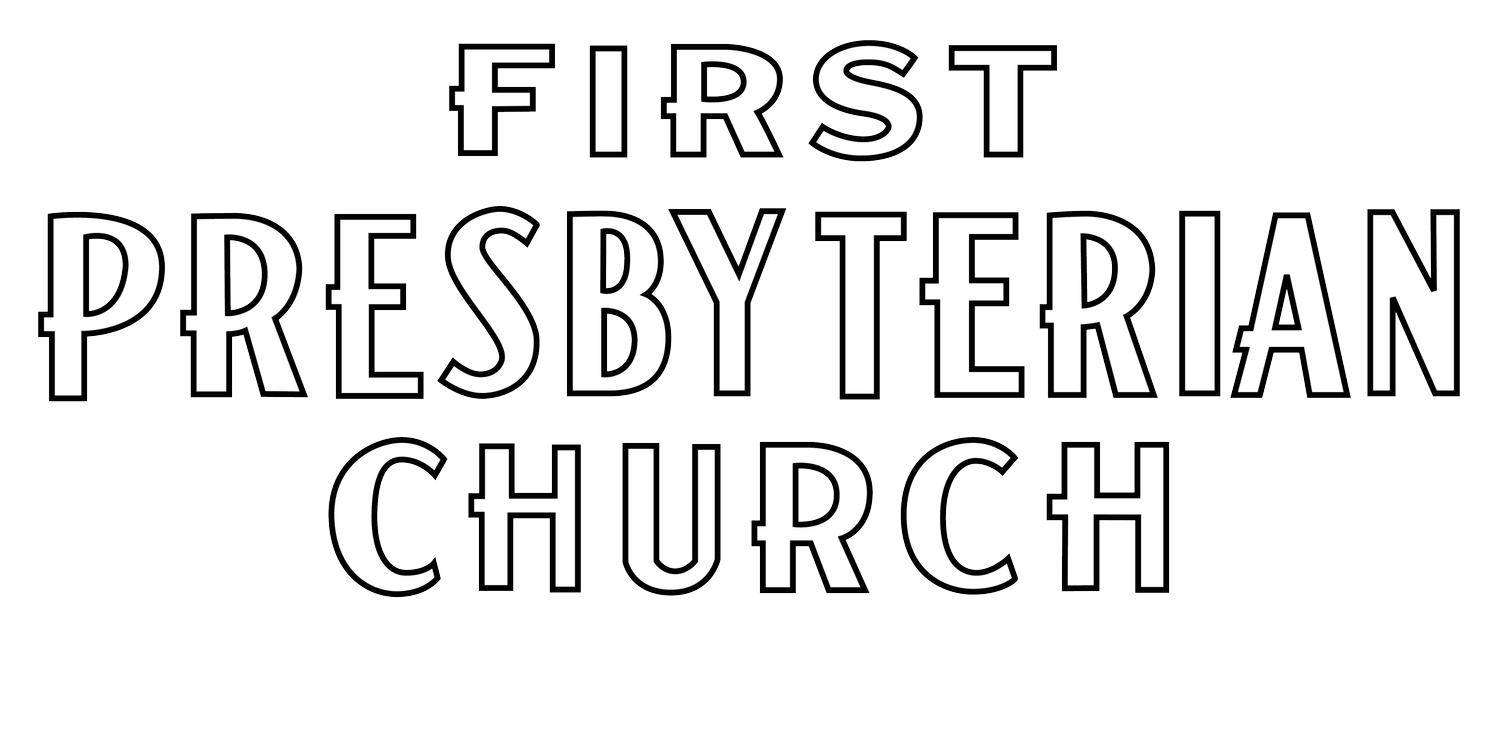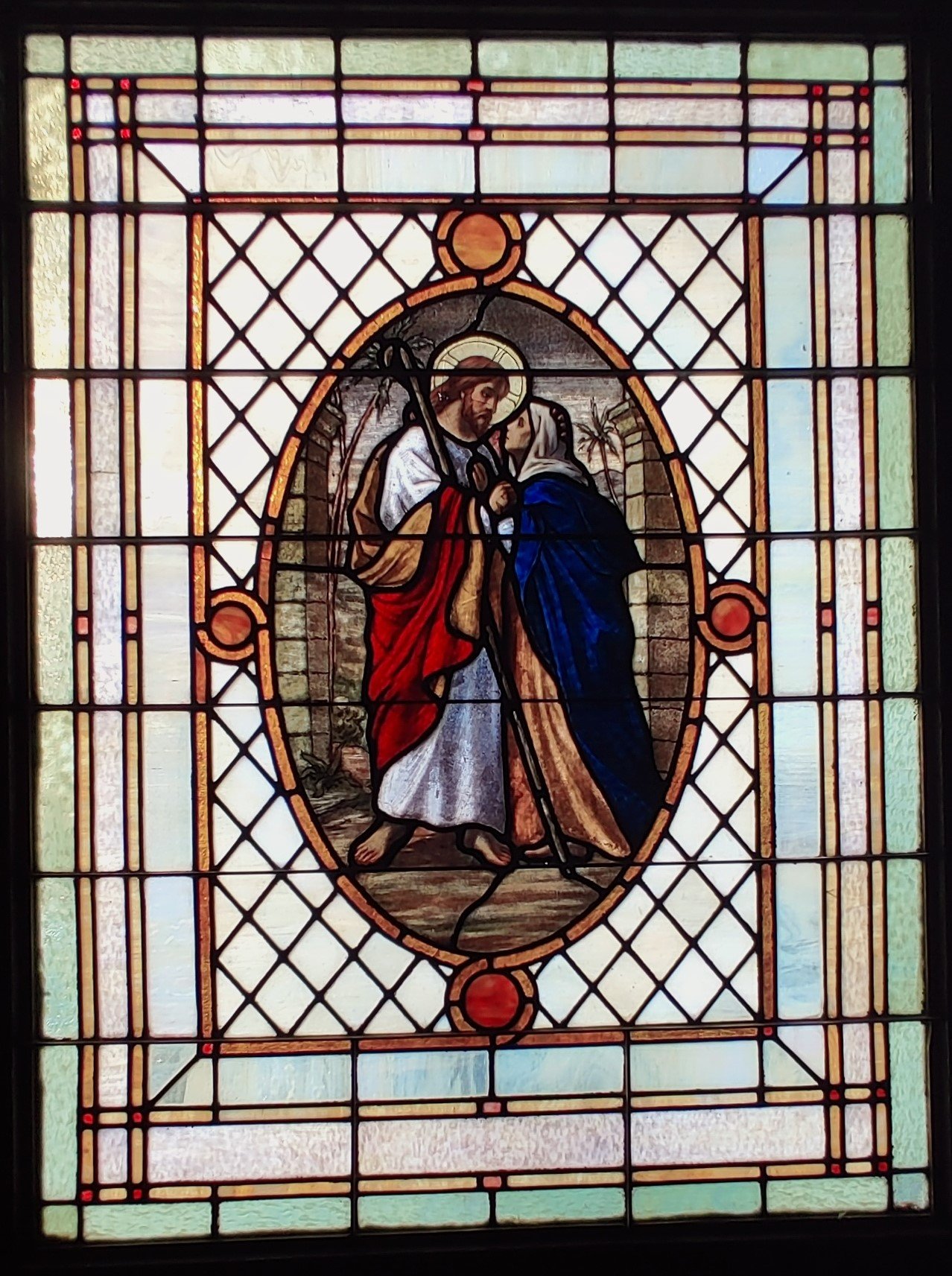
STAINED GLASS
The Memorial Window
Also known as “The Big Window”, the large window at the front of the church was purchased and installed as a memorial to Rev. James Thompson, who died in an avalanche in 1910.
Behold, I stand at the door and knock: if any man hear my voice, and open the door, I will come in and will sup with him, and he with me.
Revelation 3:20
The door has no handle on the outside. “We have to open the door and let Christ into our lives.” This was a favorite sermon theme of Dr. Macartney.
At the height of the campaign against the liquor industry, an irate opponent drove by the church on Garden Street during a Sunday evening service, and fired two rounds of bird shot through the Thompson Memorial Window, as an expression of his displeasure over the activity of the church and its pastor.
– Dr. Keith Murray, Centennial Churches of Washington’s Fourth Corner p.132
-
From a Church Bulletin dated May 7, 1911
“The Pastor is now engaged in raising money for the James Thomson Memorial Window and all wishing to have a part in this are requested to hand their names and their subscription to the Pastor.
It is hoped that the friends of Mr. Thomson in this city and all over the state will respond generously. The price of the window is $1500.”
The central figure of “Christ Knocking at the Door” in this beautiful window was thus provided for. It became evident that the two side panels must of necessity be only in scroll glass. Mr. Willets, a friend and prominent Mason, came forward and requested the privilege of placing the two historical figures on each side. The one “A Knight of the Templars” and the other, “A Knight of the Black Cross.”
The work was done by Mr. Povey of Portland Art Glass Company, who made a number of trips up here to study the window space provided. It was my privilege to be present at the moulding of the central part of the robe of our Lord. The large piece of white glass was spread upon the smooth base of the furnace. The heat above and below caused it to become pliable. By delicate maneuvering with a long instrument the piece was pushed here and there, making the wrinkles which appear; the smaller parts were then formed and leaded together. The window has stood well during the intervening 48 years, and is a thing of lasting beauty and joy by day and, with illumination, it appeals by night.
As reported by Rev. John Robertson Macartney and printed in an FPC bulletin on April 12, 1959
-
The Man and the Event
It was early in the Spring of 1910 that successively heavy snow crowned the summit of the Cascades with a mantle about 12 feet deep.
The Great Northern Railroad at that time pierced the mountain at a higher elevation than at present. The tunnel was about two miles in length. The entrance on the west side was considerable lower than that of the east side, thus making a natural draught.
A week of heavy rains made the snow ponderous in weight. From mountain tops the snow came crashing down on both sides of the tunnel. All rail and telegraph communication with the world below was severed. On the western side were two trains; one a mail and express and the other a passenger train with the Winnipeg sleeper.
Overhanging the cluster of houses and the Balis hotel, still more slides threatened. Alarmed, the passengers persuaded the conductor to move the train into the tunnel. Here both light and heat gave out and the draught made the situation worse. Some food was available from the little hotel which each winter prepared itself for such an emergency. The rotary plow was useless because the fuel gave out and the tracks were piled high with fallen trees.
The Rev. James M. Thomson, Church organizer of the Presbytery of Bellingham and Wenatchee, was on board the train. That Sunday he gathered the passengers together in the one heated car. There was a cornetist among them. With his aid, Rev. Thomson conducted a divine service. The second slide came down about midnight, sweeping trains, engines, snow plow down over the mountain side. High trees cut down like straws fell on the sliding blanket of snow and plunged down on top of the buried cars and people, filling the deep ravine almost to the level. Word was carried down the mountain side to Scenic, where the tidings were flashed to the world.
The Railroad Company at once set going rescue operations at a point above Scenic. A rope several hundred feet in length was fastened so that climbers could make their way up to the level of the tracks above. From there over the deep snow and down into the snow sheds for distances, workers reached the place of operation. Alaska sleds were pulled up the steep incline and dragged to the little baggage room which was all that was left of the depot, and as the 110 bodies were dug out below, they were given first aid, embalming procedure and stripped of clothing, wrapped in blankets gathered from the wreck, and piled up like cordwood awaiting, first to be dragged by workmen and later loaded on the Alaska sleds. To get them down from the railroad level to Scenic, a man would take a blanketed body, and sitting down with the guiding rope under his arm started the body sliding down, himself following.
Feeling responsibility in the matter, I went at once to Everett and made arrangements to go up with the next relief train as far as Scenic. With me was a Mr. Challacomb, an undertaker from Everett. We climbed up to reach the scene and took part in shoveling. As bodies were found, we took them to the little baggage room. Everyone was filled with apprehension that a hanging slide above might at any moment come thundering down.
I slept that night in the bunkhouse of the electric locomotive trainmen. During the night a terrific storm raged and fine snow swept down, quickly effacing all evidence of rescue tunnels and pathways. In the morning it looked like one vast glittering graveyard.
During this time, Mrs. Thomson was beside herself with anxiety. She knew Mr. Thomson was expected on that train. When Mr. Thomson’s body was found, in his pocket was his Bible which he had used at the service. Around the Scripture passage, Psalm 19, was drawn pencil marks, reading: “Cascade Tunnel,(March 1, 1910) trying hard to smile.”
Impressive services were held in Bellingham. At a later date the Bible found in his pocket was given to one of Rev. Thomson’s sons who was preparing for the ministry.
This tells the story of the Memorial Window and why we are dedicating this James Thomson Memorial Plaque to the memory of a man of God, a pioneer for Christ, a founder of churches, a citizen highly esteemed and a brother beloved.
“From snowy heights, to realms of glory,
He is numbered with the saints in glory.O God, to us may grace be given
To follow in their train.”As reported by Rev. John Robertson Macartney and printed in an FPC bulletin on April 12 1959





































